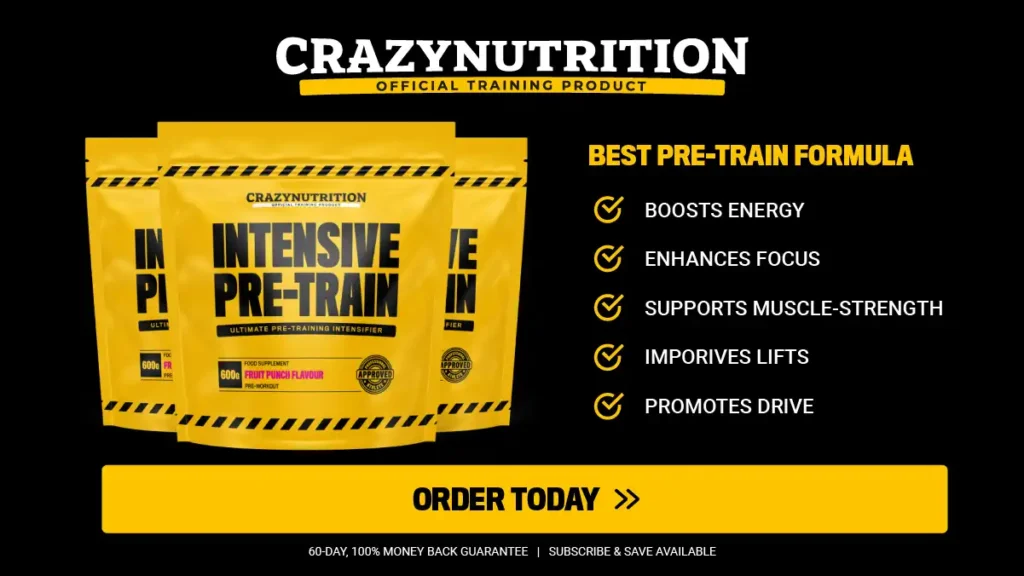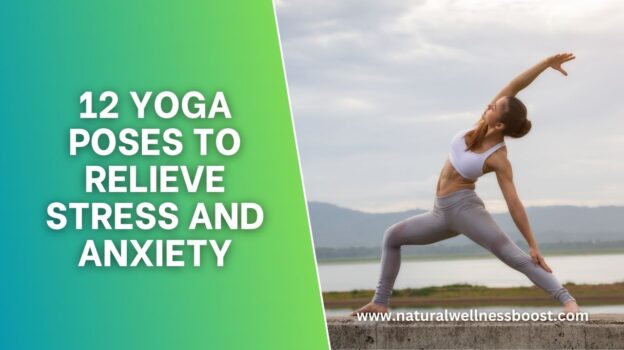In today’s fast-paced world, stress and anxiety have become unwelcome companions for millions of people. While intense cardio sessions and heavy weightlifting certainly have their place in a well-rounded fitness routine, sometimes the body and mind crave something gentler yet equally effective.
Enter yoga – an ancient practice that combines physical movement, breathwork, and mindfulness to create a powerful antidote to modern life’s pressures.
For fitness enthusiasts who typically gravitate toward high-intensity workouts, yoga might initially seem too slow or easy. However, those who incorporate yoga into their training discover that it offers unique benefits that complement their existing routine while providing profound stress relief.
The practice doesn’t just stretch tight muscles from intense workouts; it actively calms the nervous system and teaches the body how to find stillness amidst chaos.

Understanding the Connection Between Yoga and Stress Relief
The science behind yoga’s stress-busting effects lies in its ability to activate the parasympathetic nervous system – the body’s “rest and digest” response. When people practice yoga poses combined with conscious breathing, they signal to their brain that it’s safe to relax.
This physiological shift counteracts the chronic fight-or-flight response that many experience due to work pressure, relationship challenges, and the constant stimulation of modern life.
Regular yoga practice has been shown to reduce cortisol levels, lower blood pressure, and improve heart rate variability – all indicators of reduced stress. For those accustomed to measuring fitness progress through increased weights or faster mile times, these internal improvements might be less obvious but are equally valuable for overall health and athletic performance.
Benefits of Yoga for Stress and Anxiety Management
Incorporating yoga into a fitness routine offers several stress-related benefits that enhance both mental well-being and physical performance:
- Improved sleep quality: The relaxation response triggered by yoga helps quiet racing thoughts and prepares the body for restorative sleep
- Enhanced focus and concentration: Regular practice trains the mind to stay present, improving performance in both workouts and daily activities
- Better emotional regulation: Yoga teaches practitioners to observe their thoughts and feelings without immediate reaction, creating space for more thoughtful responses
- Reduced muscle tension: Chronic stress creates physical tightness that yoga specifically targets and releases
- Increased body awareness: This heightened awareness helps prevent injuries and improves form during other exercises
- Natural mood elevation: The combination of movement, breathwork, and mindfulness naturally boosts endorphins and serotonin levels
The 12 Most Effective Yoga Poses for Stress Relief
1. Child’s Pose (Balasana)
Child’s Pose serves as yoga’s ultimate reset button, offering immediate refuge when stress levels spike. This gentle forward fold naturally calms the nervous system while providing a safe space to turn inward and reconnect with the breath.
How to practice: Kneel on the floor with big toes touching and knees hip-width apart. Sit back on the heels and fold forward, extending arms in front or resting them alongside the body. Rest the forehead on the mat and breathe deeply.
Stress relief benefits: The forward folding action activates the parasympathetic nervous system, while the supported forehead position helps quiet mental chatter. The pose also gently stretches the hips, thighs, and ankles, releasing physical tension.
Modifications: Place a bolster or pillow between the thighs and torso for extra support, or rest the forehead on a block if it doesn’t comfortably reach the floor.
2. Cat-Cow Stretch (Marjaryasana-Bitilasana)
This flowing movement between two poses creates gentle spinal mobility while encouraging rhythmic breathing – a combination that immediately soothes frazzled nerves. The repetitive nature of Cat-Cow helps shift focus away from stressful thoughts and into the present moment.
How to practice: Start on hands and knees in tabletop position. Inhale and arch the back, lifting the chest and tailbone toward the ceiling (Cow). Exhale and round the spine, tucking the chin to chest (Cat). Continue flowing between these positions for 5-10 breaths.
Stress relief benefits: The spinal movement releases tension in the back and neck while the coordinated breathing helps regulate the nervous system. This pose is particularly beneficial for those who spend long hours sitting at desks.
Modifications: Perform the movement while seated in a chair, focusing on the spinal articulation, or place padding under the knees for extra comfort.
3. Legs-Up-The-Wall Pose (Viparita Karani)
Considered one of yoga’s most restorative poses, Legs-Up-The-Wall requires minimal effort while delivering maximum relaxation benefits. This gentle inversion helps reset the nervous system and provides relief from the physical effects of standing or sitting for extended periods.
How to practice: Lie on the back near a wall and extend legs up the wall, forming an L-shape with the body. Arms rest comfortably by the sides with palms facing up. Close the eyes and focus on deep, steady breathing.
Stress relief benefits: The mild inversion improves circulation and lymphatic drainage while signaling to the body that it’s time to rest. The supported nature of the pose allows complete muscular relaxation.
Modifications: Place a bolster or folded blanket under the lower back for additional support, or bend the knees slightly if the hamstrings feel too tight.
4. Forward Fold (Uttanasana)
Standing Forward Fold offers an accessible way to experience the calming effects of inversion while releasing tension in the back body. This pose helps practitioners turn their attention inward and away from external stressors.
How to practice: Stand with feet hip-width apart and slowly hinge forward from the hips, letting the arms hang heavy or rest on the shins. Keep a slight bend in the knees to protect the lower back and hold for several breaths.
Stress relief benefits: The forward folding action calms the nervous system while the gentle inversion increases blood flow to the brain. The pose also stretches the hamstrings, calves, and spine.
Modifications: Rest the hands on blocks or the shins instead of reaching for the floor, or perform the pose while seated in a chair.
5. Seated Spinal Twist (Bharadvajasana)
Gentle spinal twists help wring out physical and mental tension while improving mobility in the spine. This seated variation is particularly accessible and can be practiced almost anywhere when stress levels rise.
How to practice: Sit cross-legged or with legs extended, then draw the right knee toward the chest. Place the right hand behind the body for support and use the left elbow to gently deepen the twist to the right. Repeat on the opposite side.
Stress relief benefits: Twisting poses help stimulate the digestive organs and nervous system while releasing tension in the spine and shoulders. The rotational movement also helps shift perspective both physically and mentally.
Modifications: Perform the twist while seated in a chair, or place a bolster or pillow under the bent knee for extra support.
6. Corpse Pose (Savasana)
Often considered the most important yet challenging pose in yoga, Corpse Pose teaches complete physical and mental relaxation. While it appears simple, learning to truly let go requires practice and offers profound stress relief benefits.
How to practice: Lie flat on the back with legs slightly apart and arms resting comfortably away from the body, palms facing up. Close the eyes and systematically relax each part of the body, starting from the toes and working upward.
Stress relief benefits: Complete muscular relaxation allows the nervous system to fully activate its rest and digest response. Regular practice of Savasana helps develop the ability to find calm even in stressful situations.
Modifications: Place a bolster under the knees to support the lower back, cover the body with a blanket for warmth, or use an eye pillow to deepen the sense of relaxation.
7. Cobra Pose (Bhujangasana)
This gentle backbend opens the heart and chest while strengthening the back muscles. Cobra Pose helps counteract the forward hunching that often occurs during stressful periods and encourages deeper breathing.
How to practice: Lie face down with palms under the shoulders. Press the pubic bone into the floor and slowly lift the chest, keeping the shoulders away from the ears. Hold for several breaths before slowly lowering down.
Stress relief benefits: Heart-opening poses help release emotional tension while improving posture and breathing capacity. The gentle backbend also strengthens the muscles that support good posture.
Modifications: Keep the forearms on the ground for a gentler version (Sphinx Pose), or place a bolster under the chest for supported heart opening.
8. Bridge Pose (Setu Bandhasana)
Bridge Pose combines the benefits of a gentle backbend with mild inversion, making it excellent for stress relief. This accessible pose helps open the chest and heart while strengthening the legs and glutes.
How to practice: Lie on the back with knees bent and feet flat on the floor, hip-width apart. Press through the feet to lift the hips, creating a bridge shape with the body. Hold for several breaths before slowly rolling down vertebra by vertebra.
Stress relief benefits: The heart-opening action helps release emotional tension while the mild inversion calms the nervous system. Bridge Pose also strengthens the posterior chain, which often becomes weak from prolonged sitting.
Modifications: Place a block between the thighs to engage the inner legs, or rest the sacrum on a bolster for a more restorative version.
9. Pigeon Pose (Eka Pada Rajakapotasana)
Hip-opening poses like Pigeon are renowned for their ability to release stored emotional tension. The hips often hold stress and trauma, making this pose particularly effective for deep relaxation and emotional release.
How to practice: From hands and knees, bring the right knee forward and place it behind the right wrist. Extend the left leg straight back and slowly fold forward over the front leg, resting on the forearms or forehead.
Stress relief benefits: Deep hip opening helps release physical and emotional tension while the forward folding action calms the nervous system. This pose often brings up emotions, providing an opportunity for healthy emotional processing.
Modifications: Place a bolster or pillow under the front hip for support, or practice a gentler version by lying on the back and crossing one ankle over the opposite knee.
10. Happy Baby Pose (Ananda Balasana)
This playful pose combines hip opening with gentle spinal flexion, creating a sense of joy and lightness that naturally counteracts stress and anxiety. The rocking motion can be particularly soothing.
How to practice: Lie on the back and draw the knees toward the chest. Grab the outside edges of the feet and gently pull the knees toward the armpits. Rock gently from side to side if it feels good.
Stress relief benefits: The pose gently massages the spine while opening the hips and groins. The playful nature of Happy Baby can help shift perspective and bring a sense of lightness to heavy emotions.
Modifications: Hold behind the thighs instead of the feet, or use a strap around the feet if the hands don’t easily reach.
11. Reclined Butterfly (Supta Baddha Konasana)
This deeply restorative pose opens the hips and heart while requiring minimal muscular effort. Reclined Butterfly is particularly effective for releasing tension and anxiety stored in the pelvic region.
How to practice: Lie on the back and bring the soles of the feet together, allowing the knees to fall open to the sides. Rest the arms comfortably by the sides and focus on deep, steady breathing.
Stress relief benefits: The gentle hip opening releases physical and emotional tension while the supported backbend opens the heart. This pose is particularly calming for the reproductive and digestive systems.
Modifications: Place bolsters or pillows under each knee for support, or lie back over a bolster placed lengthwise along the spine for deeper heart opening.
12. Supported Fish Pose (Matsyasana)
This restorative backbend opens the chest and throat while requiring minimal effort. Supported Fish Pose helps counteract the physical effects of stress while encouraging deeper, more relaxed breathing.
How to practice: Place a bolster or firm pillow lengthwise along the spine and lie back over it, allowing the chest to open naturally. Extend the legs comfortably and rest the arms by the sides.
Stress relief benefits: The supported heart opening helps release emotional tension while improving breathing capacity. The gentle backbend also helps counteract forward head posture common in stressed individuals.
Modifications: Use a smaller bolster or folded blanket for less intense opening, or place a pillow under the head if the neck feels strained.
Creating an Effective Yoga Routine for Stress Management
Building a consistent yoga practice for stress relief doesn’t require hours of daily commitment. Even 10-15 minutes of focused practice can provide significant benefits. The key is regularity rather than duration.
A balanced stress-relief sequence might include:
- Warm-up movement: Cat-Cow or gentle twists to prepare the body
- Standing pose: Forward Fold to begin turning inward
- Seated poses: Spinal twists and hip openers to release tension
- Backbends: Cobra or Bridge to open the heart
- Restorative poses: Legs-Up-The-Wall or Supported Fish
- Final relaxation: Always end with Corpse Pose
Timing and Frequency Guidelines
| Time of Day | Recommended Poses | Duration | Benefits |
|---|---|---|---|
| Morning | Cat-Cow, Forward Fold, Cobra | 5-10 minutes | Prepares body and mind for the day |
| Midday | Seated Twists, Child’s Pose | 5-15 minutes | Releases workday tension |
| Evening | Legs-Up-Wall, Reclined Butterfly, Corpse Pose | 15-30 minutes | Prepares for restful sleep |
| Anytime (high stress) | Child’s Pose, Forward Fold | 2-5 minutes | Immediate stress relief |
Breathing Techniques to Enhance Stress Relief
The breath serves as the bridge between body and mind in yoga practice. Conscious breathing techniques, or pranayama, can amplify the stress-relieving effects of physical poses:
- Three-Part Breath: Breathe into the belly, ribs, and chest sequentially, then exhale in reverse order
- Extended Exhale: Inhale for 4 counts, exhale for 6-8 counts to activate relaxation response
- Box Breathing: Inhale for 4, hold for 4, exhale for 4, hold for 4
- Alternate Nostril Breathing: Use the thumb and ring finger to alternate closing nostrils while breathing
Tips for Beginners
Starting a yoga practice for stress relief doesn’t require perfect poses or extensive flexibility. Focus on these key principles:
- Listen to your body: Never force poses or push through pain
- Emphasize breath over form: Steady breathing is more important than perfect alignment
- Start small: Begin with 5-10 minutes daily rather than attempting long sessions
- Create consistency: Regular short practices are more beneficial than occasional long ones
- Find your edge: Work at about 70% of your maximum effort to stay in the relaxation zone
- Use props liberally: Blocks, bolsters, and blankets make poses more accessible and comfortable
Common Mistakes to Avoid
Even with the best intentions, beginners often make mistakes that can reduce the stress-relieving benefits of yoga:
- Rushing through poses: Take time to settle into each position and breathe deeply
- Comparing to others: Focus on your own experience rather than trying to match others’ flexibility
- Skipping Savasana: The final relaxation is often the most important part of practice
- Holding the breath: Maintain steady breathing throughout all poses
- Practicing when injured: Respect injuries and modify or skip poses that cause pain
- Expecting immediate results: Stress relief benefits build over time with consistent practice
Integrating Yoga with Other Fitness Activities
For those with established workout routines, yoga can enhance rather than replace existing activities. Consider these integration strategies:
- Post-workout yoga: Use gentle poses after intense exercise to promote recovery
- Active recovery days: Replace complete rest days with gentle yoga sessions
- Pre-workout preparation: Use dynamic yoga movements as part of warm-up routines
- Travel companion: Yoga requires no equipment and can be practiced anywhere
- Competition preparation: Use yoga to manage pre-competition nerves and anxiety
When to Seek Additional Support
While yoga can be incredibly effective for managing stress and anxiety, it’s important to recognize when additional support might be beneficial. Consider consulting healthcare professionals if:
- Anxiety or stress significantly impacts daily functioning
- Physical symptoms of stress persist despite regular practice
- Emotional overwhelm continues without improvement
- Sleep disturbances remain chronic
- Relationship or work performance suffers due to stress levels

Making Yoga a Sustainable Practice
Long-term success with yoga for stress relief depends on creating sustainable habits rather than perfect practice. Consider these strategies for maintaining consistency:
- Schedule practice time: Treat yoga appointments as non-negotiable commitments
- Prepare your space: Keep a designated area ready for practice
- Track your mood: Notice how you feel before and after practice
- Join a community: Online or in-person groups provide accountability and support
- Adapt as needed: Modify practice length and intensity based on current life circumstances
- Celebrate small wins: Acknowledge the benefits you notice, however subtle
The journey toward stress relief through yoga is deeply personal and unfolds differently for each practitioner. Some may find immediate calm in gentle forward folds, while others discover their peace in heart-opening backbends. The key lies in approaching the practice with patience, curiosity, and self-compassion.
As fitness enthusiasts learn to balance their high-intensity training with mindful yoga practice, they often discover that this combination creates not just physical strength and flexibility, but also mental resilience and emotional stability. In a world that constantly demands more, faster, and stronger, yoga offers the radical invitation to simply be present, breathe deeply, and find peace within movement.
The twelve poses outlined here provide a comprehensive toolkit for managing stress and anxiety through yoga. Whether practiced individually when stress spikes or woven together into a flowing sequence, these poses offer reliable pathways back to calm. Remember that the most powerful pose is often the one practiced consistently, even if imperfectly, rather than the most advanced pose performed occasionally.
By incorporating these stress-relieving yoga poses into their wellness routine, fitness enthusiasts can develop a more balanced approach to health that honors both the need for physical challenge and the equally important need for rest, reflection, and renewal.
Discover more from Natural Wellness Boost
Subscribe to get the latest posts sent to your email.





